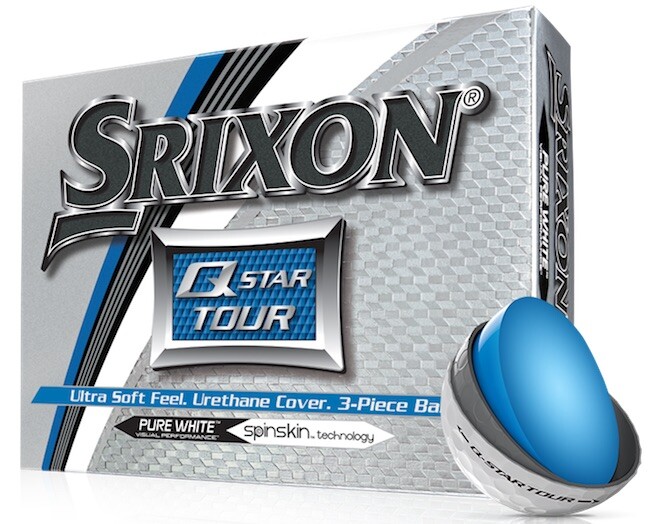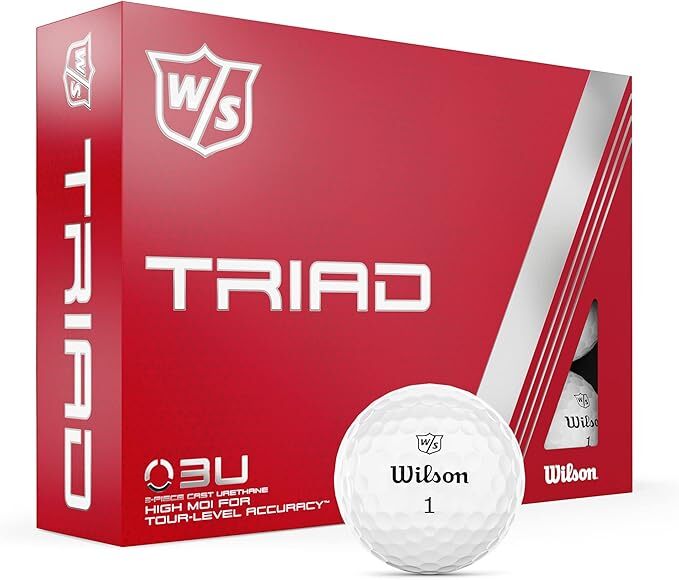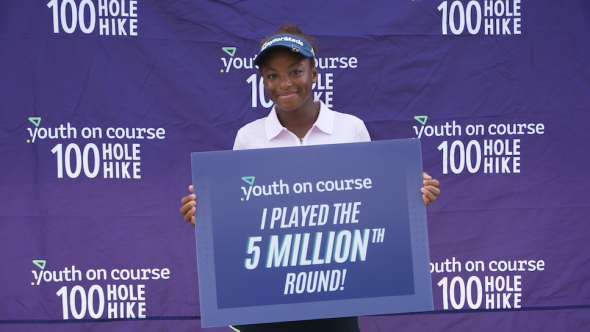Disclosure: We may receive a commission when you purchase products through our links at no additional cost to you. This helps support our content and allows us to provide you with the best information on products and services. All opinions expressed here are our own.
For mid-handicap golfers, the right golf ball can be a revelation—one of the quickest, most effective, and budget-friendly ways to improve performance. The right golf ball can help you hit longer and straighter drives, hold greens with approach shots and chip shots, and improve your putting accuracy and consistency—all critical factors in lowering your scores. Choosing the right ball isn't easy, though, and with so many models geared for different skill levels, swing speeds and playing styles, how do you know where to start?
The best mid-handicapper golf balls balance distance, feel, and control—offering enough forgiveness while still providing spin for approach shots and short-game performance. Unlike high-handicap golfers who prioritize maximum forgiveness or low-handicap players seeking premium tour-level ball spin, mid handicappers benefit from balls that deliver a blend of both.
Read on as we break down the key characteristics of the best golf balls for mid handicappers and explore how they influence performance. We’ll also discuss how understanding your own swing traits can guide you toward the best choice of a new ball. We’ll highlight four top golf balls for mid handicappers -- the Srixon Q-Star Tour, Callaway ERC Soft, TaylorMade Tour Response and Wilson Triad -- and finish up with a simple guide with our tips for picking the best ball for your game.
How we compiled the list of best golf balls for mid handicappers
We polled our GolfPass members who have handicaps between 12-18 to see what they preferred from their golf ball. In order to be eligible for this list, the product must have a least 5 reviews from our members. In determining the best golf balls, we surveyed members and asked them to rate the golf ball they use on the following categories and generated an overall score for each.
- Distance
- Feel
- Value (cost vs. performance)
- Satisfaction
You may notice that the list includes older golf balls, highlighting the continued satisfaction golfers experience with these options. We hope this list offers valuable insights, whether you are in the market for brand-new golf balls or considering used golf balls. While the list is not data-driven, it provides additional options you may want to explore during a ball fitting or looking to try something different.
How Golf Ball Characteristics Impact Performance
Every aspect of a golf ball - its compression, spin, cover material and aerodynamics - plays a critical role in how it performs on the course. Understanding these characteristics helps mid-handicap golfers make an informed selection of a ball that enhances their strengths while addressing their weaknesses. Here’s a breakdown of the most important factors:
Compression
Compression refers to how much the ball deforms upon impact. It directly influences feel, energy transfer and distance. Low-compression balls are easier to compress, making them ideal for golfers with slow to moderate swing speeds (85 to 100 miles per hour). They maximize energy transfer, helping generate more distance. High-compression balls are designed for faster swing speeds, offering more control and stability with less deformation at impact.
Spin
The right spin characteristics can enhance both your long and short game. Low driver spin reduces slices and hooks for straighter, more controlled tee shots. Moderate to high greenside spin provides better stopping power on approach shots, wedge shots and chips for improved scoring opportunities.
Cover Material
The outer layer of a golf ball significantly influences feel, spin and durability. Balls with urethane covers deliver superior greenside spin and a softer feel, making them ideal for players who prioritize short-game control. Urethane balls come with a higher price tag but offer advanced performance. Golf balls with ionomer or hybrid covers are more durable with less spin and control, yet they still promote good distance and solid performance at a lower cost.
Aerodynamics
The dimple pattern on a golf ball impacts its flight by reducing drag and promoting lift. Advanced dimple designs help mid handicappers achieve longer carry distances and maintain consistent trajectories, even in windy conditions.
Feel
Feel is subjective but crucial for confidence. Many mid handicappers prefer a softer ball for better feedback on putts and chips while still maintaining enough firmness for distance off the tee.
By understanding how these characteristics work together, mid-handicap golfers can choose a ball that complements their game. Whether your goal is gaining extra yards off the tee or sharpening your short-game precision, knowing what to look for in a golf ball is the first step toward better performance on the golf course.
How to Identify Your Swing Characteristics
Finding the right golf ball isn't just about specs—it's about matching it to how you hit your shots. Factors like swing speed and ball flight tendencies affect performance in distance, control and feel. Understanding these traits can make choosing the right ball easier.
Swing Speed
Your swing speed affects how well you compress the ball, influencing distance and feel. Slower swing speeds (below 80 mph): Look for low compression balls for more distance with less effort. Moderate swing speeds (80–99 mph) typically benefit from low-to-mid compression balls (that maximize energy transfer for longer shots. Faster swing speeds (100+ mph) may prefer higher-compression balls for greater control and stability.
Ball Flight Tendencies
Understanding how your ball moves in the air can help you choose a model that enhances your strengths and minimizes weaknesses. Struggle with slices or hooks? A low-spin ball can help straighten out your drives. Want more control around the greens? A ball with moderate-to-high greenside spin can help you stop shots more effectively.
Testing Golf Balls to Find Your Best Match
Once you understand your swing characteristics, on-course testing is the best way to find the right golf ball. Start by matching compression to your swing speed—low compression for slower swings (<85 mph) for more distance, and mid-to-high compression for faster swings (>95 mph) for more control. To assess spin and feel, test different balls on approach shots and around the greens. Does the ball check up on chips? Does it feel soft or firm off the putter? If possible, test balls with TrackMan technology or similar launch monitors and use the data to compare carry distance, spin rates, and dispersion patterns. By taking the time to test and compare golf balls, you’ll gain confidence in choosing a model that enhances your strengths.
Top Golf Balls for Mid Handicappers
Best Golf Balls for Higher Swing Speeds
Srixon Q-Star Tour

The Srixon Q-Star Tour is a premium golf ball designed to deliver tour-level performance. It offers an ideal blend of distance, greenside spin and soft feel thanks to its three-piece construction, FastLayer Core and premium urethane cover. Optimized for golfers with moderate and higher swing speeds, the Srixon Q-Star Tour provides consistent flight and performance on every shot. Key features include Spin Skin with SeRM, which Enhances friction and control on approach and short-game shots; a 338 Speed Dimple Pattern that reduces drag for straighter flight and longer carry distances; and great value for mid handicappers seeking premium performance at a very fair price.
TaylorMade Tour Response

The TaylorMade Tour Response is a tour-level ball with a focus on distance and accuracy. Designed with a cast urethane cover, it also provides excellent short game performance, offering the spin and control needed for approach shots and greenside touch. The Tour Flight Dimple Pattern enhances aerodynamics, leading to a consistent, penetrating ball flight and increased carry distance that makes it a strong fit for golfers with moderate to high swing speeds. Other key features include a low-compression core that helps generate speed while maintaining a soft, responsive feel; a SpeedMantle Layer that improves energy transfer for more powerful shots; and the 360° ClearPath Alignment™ that enhances visibility and feedback off the putter face for better aim and roll.
Best Golf Balls for Moderate Swing Speeds
Callaway ERC Soft

The Callaway ERC Soft is a hit with mid-handicap golfers with moderate swing speeds. This soft-feel ball offers impressive distance with good control. Built with a hybrid cover, this three-piece ball provides durability, greenside spin and a responsive touch on approach shots. The latest model of the ERC Soft improves energy transfer for greater speed off the clubface, while the design promotes high launch and low spin for maximum distance and penetrating flight off the tee. Key features include the Triple Track Alignment Technology that promotes accurate alignment on the tee and the greens; and a High-Speed Mantle Layer that increases ball speed without sacrificing control. Plus, it's a great golf ball for the mid-handicap golfer who wants soft feel without the high price tag.
Wilson Triad

For those seeking a well-rounded, premium ball without a premium price, the Wilson Triad, out in a new edition in 2025, is a three-piece golf ball with a soft feel and moderate spin for a nice combination of distance and control. Its ultra-thin urethane cover and uniform density across all layers produces straight flight and smooth, reliable roll on putts. The Wilson Triad is one of the most popular golf balls and with its reasonable price point, one that mid handicappers should try. It's key features include a Tri-Balanced Construction that promotes even weight distribution for a controlled, consistent ball flight; a High MOI Design that maximizes ball speed and reduces side spin for longer, straighter shots and more stability in the air; and delivers impressive spin and distance across different swing speeds.

 Back
Back















Comments (0)